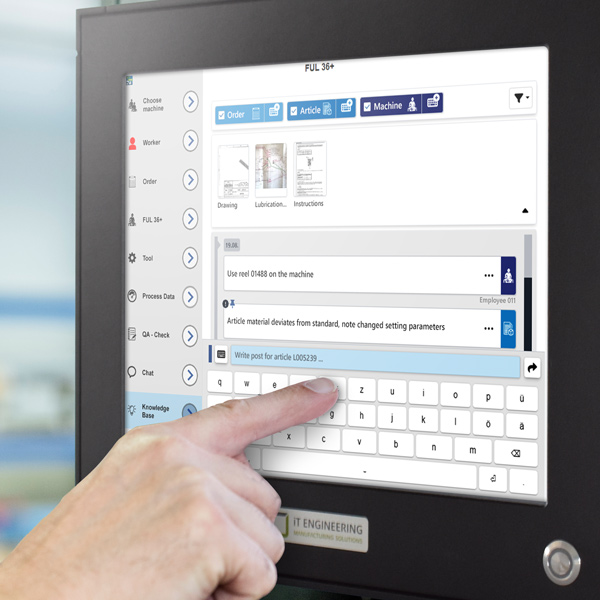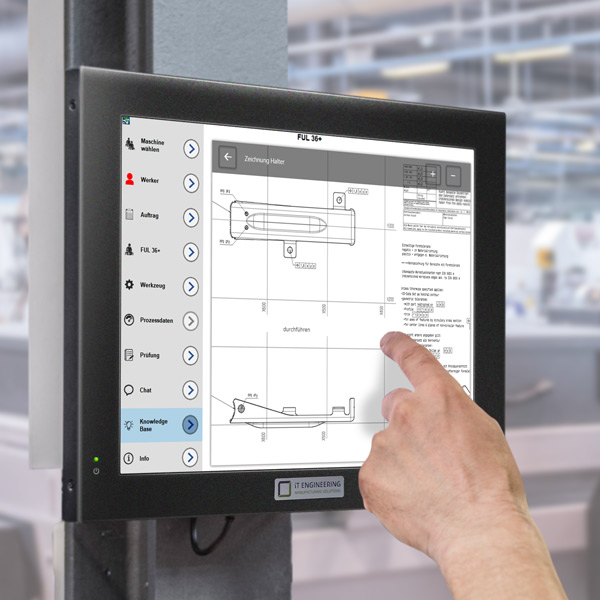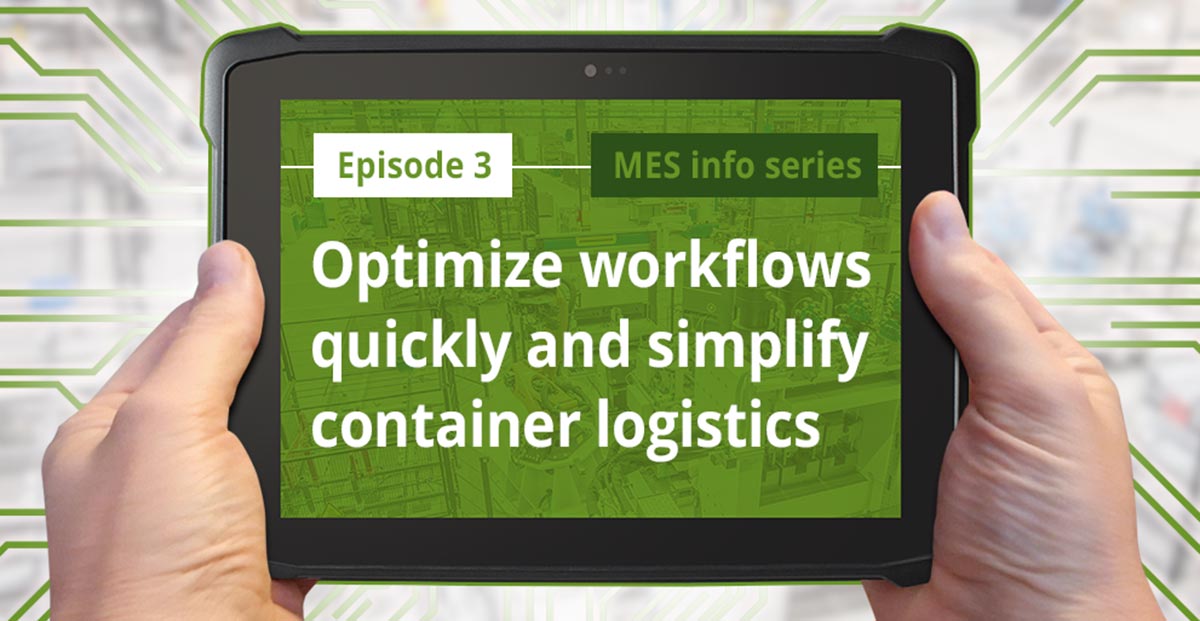
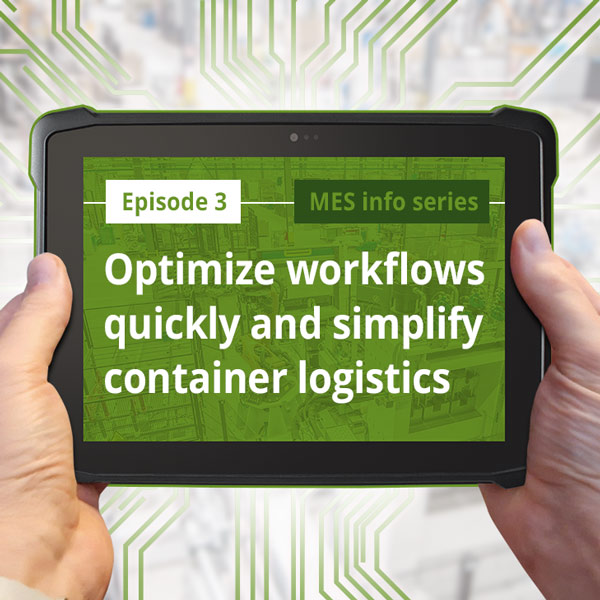
Episode 3 of the MES info series
“We’ve always done it this way.” Everyone knows this statement when it comes to why certain workflows and processes work or don’t work the way they do. And many “old familiar” processes that have been in place for years are anything but effective, productive or sustainable. In reality, many resources (time, money, materials, etc.) are wasted as a result. This is precisely where the digital factory comes in and is the perfect tool for quickly simplifying and optimizing processes and workflows in production.
And this happens across many areas of production. With the EMC Knowledgebase module, for example, the physically printed work folder is simply replaced digitally. The worker receives all the information they need, such as drawings or work instructions, conveniently at the machine terminal – complete and paperless. And they can add their own information directly.
This digital bundling of information also makes it possible, for example, to replace the typical goods or container label, which always had to be printed out blank and laboriously filled in by hand. All information is available in the system. The label can be printed out directly at the workstation using mobile printer hardware, allowing the container to be perfectly labeled.
This pays off when it comes to complete traceability in production. Clean processes are immensely important here. In the digital factory, containers are labeled automatically using the recorded and stored data or according to specifications from the ERP. By scanning QR codes on the goods label, products, batches and containers can be reliably localized.
In the third episode of our MES info series on the topic of digitalization, we show you how you can quickly optimize many workflows in your factory with simple means and thus simplify container logistics in the long term, for example.
Optimize workflows quickly
and simplify your container logistics
Optimize workflows quickly and simplify your container logistics
Simplify and optimize workflows
By simply and digitally providing relevant information and documents for each order, production processes can be sustainably optimized and simplified. With EMC KnowledgeBase, for example, article drawings or plans can be displayed directly at the machine. Digitally and at the touch of a button, directly at the MES terminal in production or on a mobile tablet.
The employee at the machine no longer has to rummage through documents, but has quick and efficient access to the information required for his work. All important documents relating to both the order and the machine are stored digitally. Separate order or article folders with printouts of this information are therefore no longer necessary.
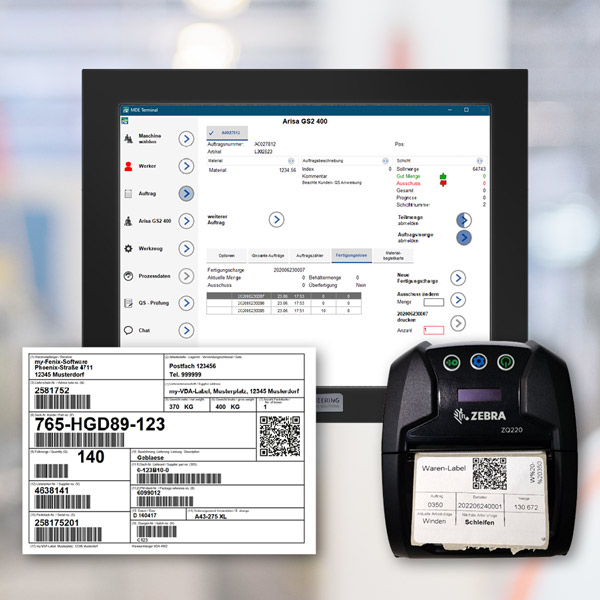
Print out the goods label directly on site
The digital factory offers the option of printing out the goods label directly at the machine when the container is full. This is done manually or automatically by the machine or a container changer. The quantities are taken from the Machine Data Acquisition and simply move along as information.
The stored and recorded information is anchored in the MES Software EMC system and assigned to each order. This means that this information travels with each container and can be called up at any time using a QR code. In addition to the order and container number, it can also contain the quantity, the current and next work sequence and other information relevant to your production, such as the location.
This enables clear, digital identification of the parts and containers and thus seamless traceability.

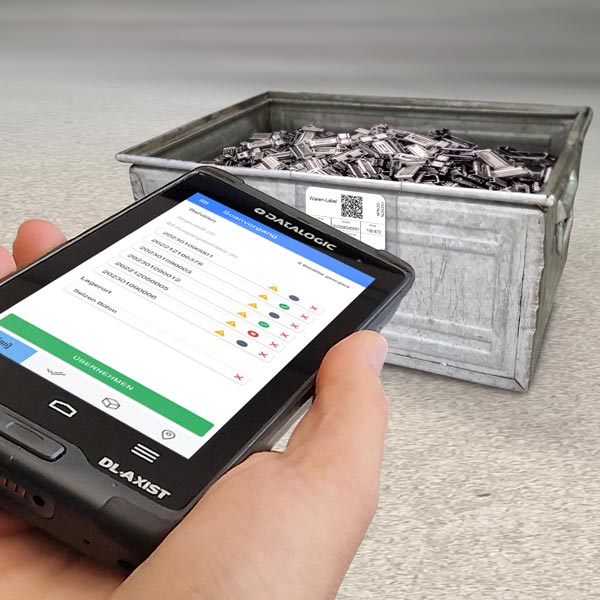
Simplify container logistics in production
Each container is given a unique container number in EMC FactoryLogistics, either specified by the ERP or generated directly at the MES terminal for each order. Once the order has been completed, the container is emptied and assigned a different label for the next order. This makes it easy to localize each container (at the machine, in the interim storage area, etc.). Typically, containers are identified using barcodes, QR codes or RFID.
Intralogistik 4.0
This is how container and transport organization works in the digital factory: For each work step, the containers are clearly identified and registered as incoming or outgoing containers – including the individual work steps and intermediate storage locations. The incoming and outgoing containers are stored and managed for each work step of a production order.
This makes the location of the semi-finished parts transparent for everyone. No more searching for containers.
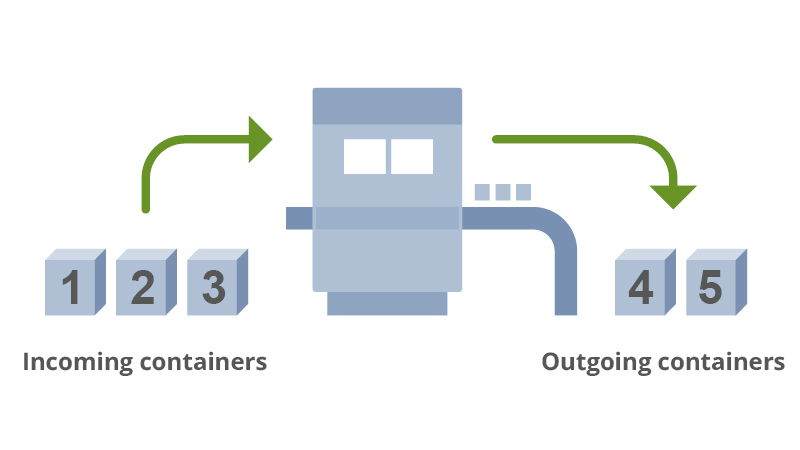
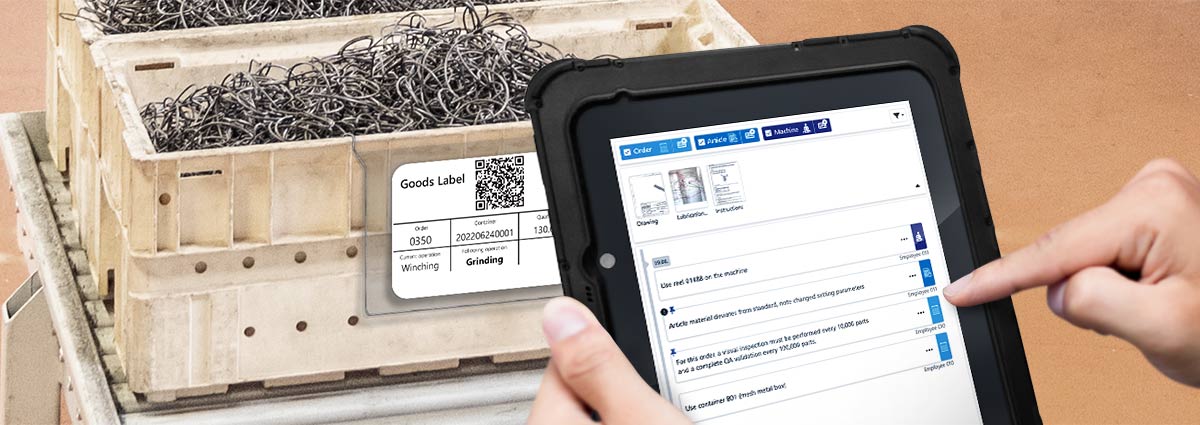
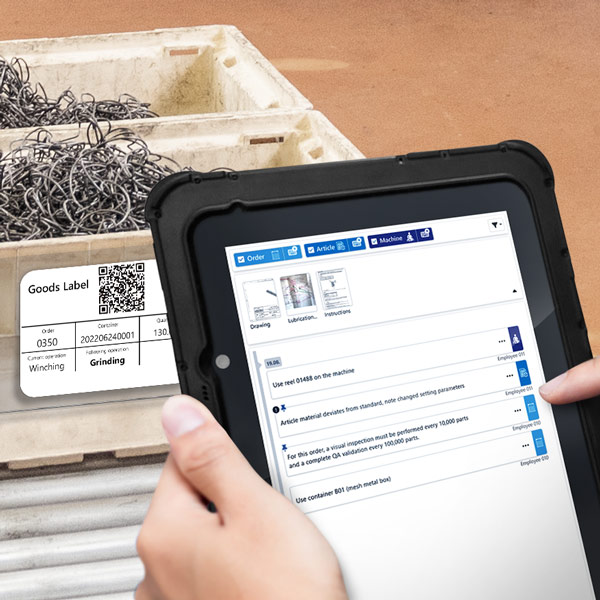
Paperless and digitally identifiable
In the digital factory, the combination of the EMC FactoryLogistics and EMC KnowledgeBase modules enables additional stored information to travel with each container in addition to the unique identification. Scanning the QR code provides the same drawings, information and documents at any time. This means that everyone has the same data and information as a basis. This guarantees maximum transparency, efficiency and traceability and makes a lasting contribution to quality assurance in production.
Conclusion Episode 3
The digitalization of processes can quickly simplify and optimise some workflows in production. Relevant information and knowledge from production can be used in a variety of ways. This simplifies working methods and enables errors and weak points to be eliminated. As all important information is bundled and available, printouts, order folders or forms that have to be filled out by hand are no longer necessary and an important step towards sustainable and almost paperless production and manufacturing.
Container logistics in particular benefit significantly from this. Information travels automatically and sensibly and ultimately ensures that products, containers and batches can be reliably traced at all times. It takes the complexity and error-proneness out of container management. And it guarantees that all relevant information is always available – at the machine, for the individual employee and when locating the containers.

